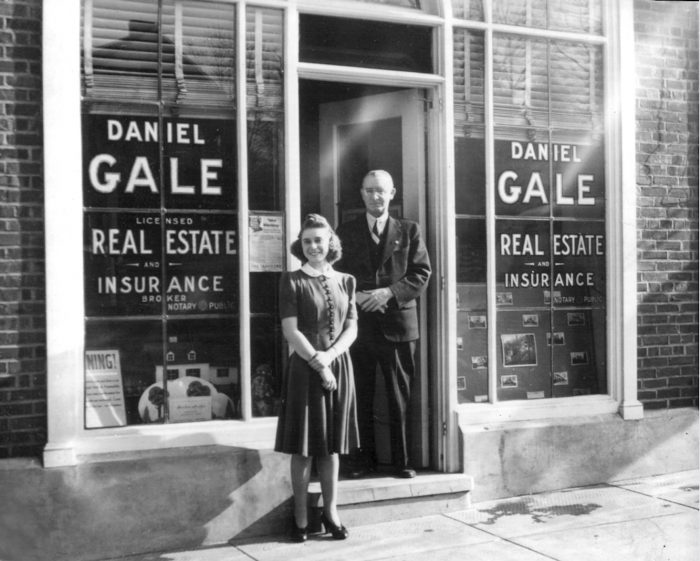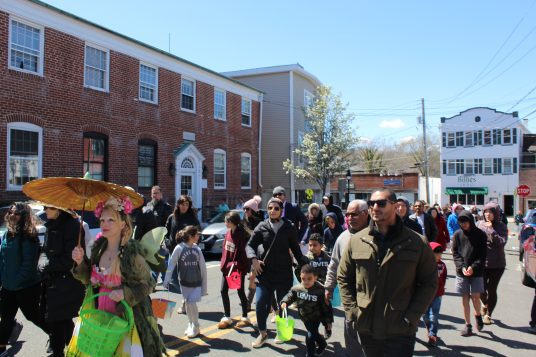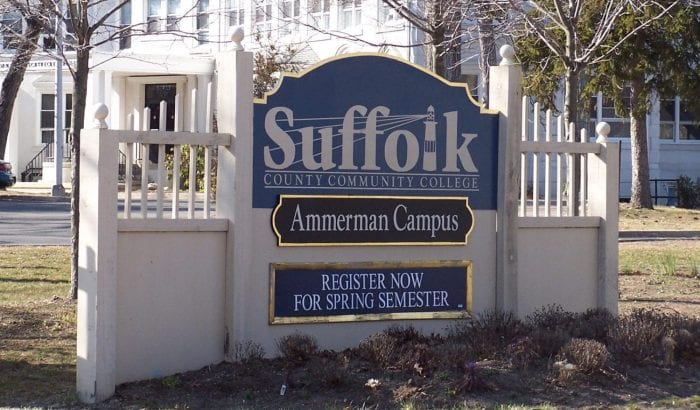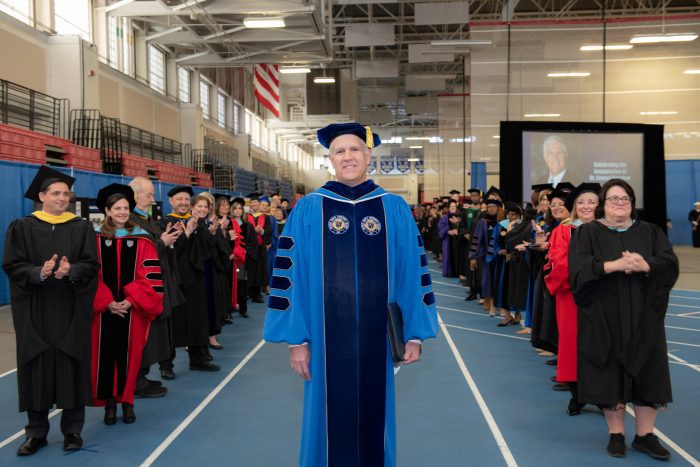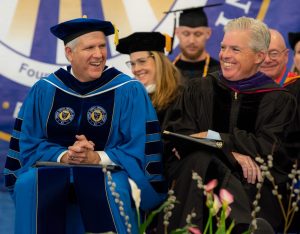Not many companies make it to 100 years in business, but Daniel Gale Sotheby’s International Realty did just that this year.

Daniel Gale founded the company on Feb. 9, 1922, and chose Main Street in Huntington for his real estate and insurance agency. When he picked the spot, the founder was encouraged by the fact that the town was a stop on one of the Long Island Rail Road lines. A century later, the company remains family owned. Through the decades the founder’s son Kent, until his passing in 2014, grandson Stan, and Kent Gale’s protégé current chairperson and president Patricia Petersen have continued to head up the company along with CEO Deirdre O’Connell.
History
In a recent phone interview, Petersen and O’Connell discussed the company’s history. Over the hundred years, Daniel Gale has grown from a business with one office to 30 locations not only on Suffolk County’s North Shore but across the Island. In 2014, the brokerage company opened offices in Queens and this year Brooklyn.
Petersen said she believes one of the company’s assets is that it has been family owned. She learned the benefits of this early on when she started in real estate in 1975 in the Cold Spring Harbor location, which was the company’s second office. Petersen said as a mother, she was hoping to work part-time but quickly found out it was difficult to become a successful real estate agent with limited hours. She said Jean Gale, the wife of the founder’s son Kent, would help get her children off the nursery school bus, give them lunch and then get them to day care.
“Somehow we cobbled it together and made it work,” Petersen said. “It’s kind of how we run the company. Whatever the agents need, Deidre and I figure out a way to provide it.”
Petersen went from agent to office sales manager, company general manager and relocation director through the years. She credits Kent Gale with recognizing she had potential. In the early ’90s, she began buying the company with Kent’s son Stan Gale and became president and CEO.

In turn, one of the talents Petersen recognized was O’Connell. The latter said her career in real estate began with another company in 1991. She opened her own office in Manhasset and her second one in Cutchogue. Daniel Gale then bought her offices, and she became part of the company in 2007. O’Connell helped the brokerage expand to the North Fork. She went on to become a regional manager then general manager of the company, and became CEO four years ago.
Both said they appreciate the history of Daniel Gale. As the centennial celebrations began, Petersen said, it was a reminder of everything the company had been through since its founding. The ups and downs of the current pandemic, she added, can be likened to founder Daniel Gale’s early days.
“Daniel Gale went through the Depression and went through the [second] World War,” she said. “In fact, he started the company right after the first World War, and then he had to go through the second World War. We have had our own challenging times over the years, but certainly that’s not new to us. We’ve always been able to not just survive but thrive in really any kind of market.”
O’Connell said she believes the company thriving goes back to its foundation.
“Certainly, in times of crisis we use that as an opportunity to assess the crisis and to utilize that and to come out of it as a growth opportunity, because after every crisis comes opportunity,” she said. “We’ve always been able to seize those moments.”
As for the pandemic, O’Connell said the company realized the importance of pivoting early on during the shutdowns by going virtual. Within a month, she said, Daniel Gale had an open house with 150 homes virtually showcased.
“Yes, everyone could do it eventually, but we seized the moment to once again help our agents help their customers and clients in providing them the service and marketing of the moment,” O’Connell said.
Petersen and O’Connell also recognize the importance of marketing in the real estate field. An early marketing tactic of founder Daniel Gale in the 1920s, Petersen said, was buying a tract of land along with two investors. One lot had a miniature model house buried in the ground. Petersen said whoever bought the plot would win a house built for them. She added that the person turned out to be a builder, so he was given two more lots instead of having a house built for him and the win spearheaded his own business in the area.

Sotheby’s International
Another milestone in Daniel Gale’s history was when the company became affiliated with Sotheby’s in the 1970s. The auction house needed an outlet for its clientele. After Sotheby’s International Realty was created, Daniel Gale became affiliated with it on Long Island and went on to become its No. 1 affiliate in the world.
O’Connell called the move a game-changer which allows Daniel Gale agents to bring their properties around the world but still have representation on Long Island.
“Larger firms that are represented, even here on Long Island, their decisions during hard times aren’t made here locally,” she said. “They’re made maybe in New York City or across the country somewhere. We live and we work, we do everything with our people first in mind.”
She gave the example that during the Great Recession of the 2000s, while big corporations laid off people, “Pat Petersen put personal money into the company to make sure that we didn’t have to cut our people.”
Keeping employees in place is something the company was able to do during the pandemic, too.
“We kept everyone on the payroll because we could make that decision,” O’Connell said.
The present and future
Later this year, Daniel Gale plans to open a new office in Huntington located cata-cornered where the original 1922 building was on Main Street. The company also recently launched the Daniel Gale Foundation to enable the company, which has donated tens of thousands in the past, to make a bigger impact.
O’Connell said Daniel Gale offices have always been involved with their communities “through a wide range of community service initiatives and donations.” With the new foundation, offices will choose a few events each year to work on with the whole company.
“The Daniel Gale Foundation will enable us to make an even greater impact with our giving by consolidating our giving efforts across the Island from Brooklyn to Shelter Island and make them even more impactful,” O’Connell said. “The foundation is about more than giving dollars, it is having the Daniel Gale family roll up their sleeves, put on their sneakers or pick up their shovels to work in our communities as a team.”
The two said it’s important to be proud of the past but it’s also essential to keep an eye on the future. Currently, like other realty companies, Daniel Gale is keeping up with the current seller’s market. O’Connell said while inventory is low, sales are high.
“We get 10 houses on the market, or an office has five houses on the market in a weekend, and they’re all gone by Monday,” O’Connell said, adding she believes the market will normalize in the near future.
Petersen added the importance of pricing correctly in any market.
“Part of our job is to be good counselors,” she said.
As they look toward the future, Petersen and O’Connell said the ways of communicating continue to change with social media platforms, but the key is to maintain high quality just like they do in ads and online.
“You have to be true to yourself, and I’m very proud of what we’ve done in the last 100 years,” Petersen said. “Not that I had much to do with the first 50, but I am very proud of what we’ve accomplished and what is still yet to accomplish.”

